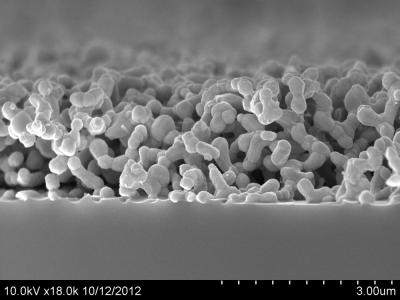Scientists have created a heat-resistant thermal emitter that could significantly improve the efficiency of solar cells. The novel component is designed to convert heat from the sun into infrared light, which can than be absorbed by solar cells to make electricity – a technology known as thermophotovoltaics.
Unlike earlier prototypes that fell apart at temperatures below 2200 degrees Fahrenheit (1200 degrees Celsius), the new thermal emitter remains stable at temperatures as high as 2500 F (1400 C).

“This is a record performance in terms of thermal stability and a major advance for the field of thermophotovoltaics,” said Shanhui Fan, a professor of electrical engineering at Stanford University. Fan and his colleagues at the University of Illinois-Urbana Champaign (Illinois) and North Carolina State University collaborated on the project. Their results are published in the October 16 edition of the journal Nature Communications.
A typical solar cell has a silicon semiconductor that absorbs sunlight directly and converts it into electrical energy. But silicon semiconductors only respond to infrared light. Higher-energy light waves, including most of the visible light spectrum, are wasted as heat, while lower-energy waves simply pass through the solar panel.
“In theory, conventional single-junction solar cells can only achieve an efficiency level of about 34 percent, but in practice they don’t achieve that,” said study co-author Paul Braun, a professor of materials science at Illinois. “That’s because they throw away the majority of the sun’s energy.”
Thermophotovoltaic devices are designed to overcome that limitation. Instead of sending sunlight directly to the solar cell, thermophotovoltaic systems have an intermediate component that consists of two parts: an absorber that heats up when exposed to sunlight, and an emitter that converts the heat to infrared light, which is then beamed to the solar cell.
“Essentially, we tailor the light to shorter wavelengths that are ideal for driving a solar cell,” Fan said. “That raises the theoretical efficiency of the cell to 80 percent, which is quite remarkable.”






